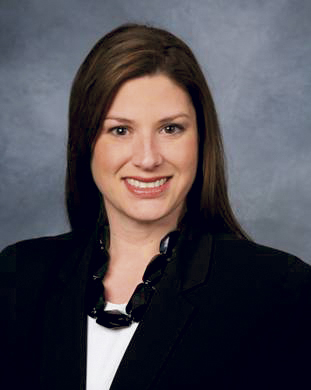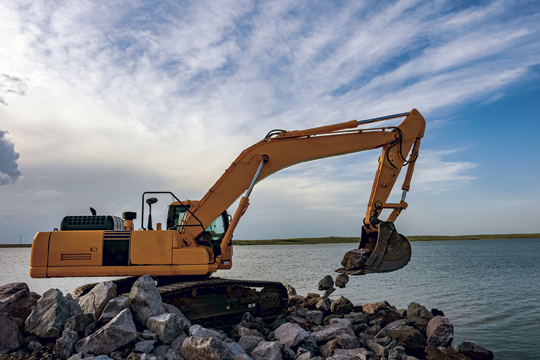Young Professionals
HOMEOWNERS POLICIES: THE CONCLUSION
Trilogy wraps up with endorsements and liability limitations and exclusions
By Christopher W. Cook
It’s time to wrap up our homeowners policies trilogy, which was inspired by a 2020 Independent Agents (Big “I”) of Indiana virtual convention session. In this final installment, we’ll discuss limitations and exclusions for liability and endorsements that can be added.
Here’s part three: back in training. That was the third Police Academy movie’s subtitle. Please tell me that you are aware of the Police Academy series. Moving forward.
Liability limitations and exclusions
At the end of the previous installment, we were breaking down the coverage parts regarding property limitations and exclusions. Let’s jump to the liability side.
Coverage E—Personal Liability. The limit for personal liability in the homeowners policy is $100,000.
“The problem with it is that there is a business exclusion,” said Nicole Broch, CIC, CISR, PLCS, an instructor with Insurance Education & Professional Development. “We do not cover any sort of bodily injury or property damage if it is business related, and in section two of the liability portion, we don’t even care who owns the business. We don’t care if it’s owned or operated by or employs an insured, because we are not going to cover personal liability if it’s business related.
“That’s not what personal liability under a homeowners policy is for. It’s for legal liability for personal loss, not a professional loss.”
Coverage F—Medical Payments to Others. The same business exclusion in Coverage E also applies here. The $1,000 limit for medical payments to others does not get paid if the reason is business by definition.
“Remember, business by definition didn’t require much—trade, profession, occupation; full-time, part-time, or occasional basis,” Broch said.
One giveback available in the business exclusion is if the “insured” is under the age of 21 years and is involved in a part-time or occasional self-employed “business” with no employees. Think about teenagers mowing lawns in the summer or shoveling driveways in the winter. This scenario would be covered under Coverage E and Coverage F.
Another exception to the business exclusion regarding Coverages E and F revolves around a property used as an Airbnb or other temporary rental situation.
“If you have an insured location that you are renting out, if it is occasional only and being used as a residence, it’s okay as long as it’s considered occasional,” Broch said. “What I want to mention here is that there are no quotation marks around the word occasional. It is up to the adjuster, and then if the insured doesn’t like the answer, then it [is] up to the court to make that final decision.”

-Nicole Broch, CIC, CISR, PLCS
Instructor
Insurance Education & Professional Development
Endorsements
There are ISO homeowners endorsements available to bring back some of the previously excluded coverage. Some of these include:
HO 04 40 Structures Rented to Others. “If you’re renting your detached structure to others for purposes other than a private garage, then it is a business by definition, but there’s the 04 40; and you don’t ever need to remember the numbers, I know it as the Fonz endorsement,” Broch said.
For the younger folks who might not know the reference, on the TV show Happy Days, the character Arthur “The Fonz” Fonzarelli lived above the Cunningham family’s garage. (For a fun mashup involving Happy Days, see the Weezer music video for “Buddy Holly”.)
The 04 40 endorsement covers an “other structure” on the residence premises that is rented to others and occupied as a dwelling. The other structure must be identified, scheduled and insured for a specific amount.
“At that point in time, on the prop-erty side, the policy is going to cover whatever happens to the structure, so that exclusion is removed now that there’s a business out of it,” Broch said.“On the liability side, there’s no longer that liability exclusion. So this is a great endorsement if you’ve got a gar-age with an apartment over the top.”
HO 04 42 Permitted Incidental Occupancies—Residence Premises. “Every carrier has its own list of permitted incidental occupancies,” Broch said. “Traditionally, we hear that permitted incidental occupancies are types of professions that are incidental to the insured’s main income. So, maybe they are a tutor on the side, but they are a teacher normally.
“What you’re doing is bringing back the ability to add business personal property, as you’re doing that out of another structure; you can schedule the other structure and you can open back up section two liability.”
Like the 04 40, it covers other structures that are used for the described business. They must also be identified, scheduled and insured for a specific amount.
“You can use it on both sides, on section one property as well as section two liability,” Broch said. “You can pick up other structures coverage and also the full Coverage C limit for the described business, therefore wiping out the $2,500 limit on residence premises for business personal property.”
HO 04 48 Other Structures On the Residence Premises—Increased Limits. “This endorsement does nothing to wipe out the business exclusion; all this endorsement does is it increases the amount of coverage on an other structure that is otherwise covered,” Broch said. “And an other structure that has a business is not otherwise covered, therefore this endorsement does nothing. Buyer beware, because I’ve seen it way too many times used and used in a way that did not help the insured.”
HO 04 12 Increased Limits on Business Property. “You can buy in incremental amounts; you can go from $2,500 to $5,000 to $7,500 to $10,000,” Broch said. “With that said, check your internal limits from your carriers. You can also increase the business personal property off-residence premises with that endorsement.
“Now, only in this endorsement do we start talking about things like property held as sample or sale. So just a note because it does stay the same if it’s property that is held for sample or sale or delivery after the sale.”
“What we are finding is that so many of our errors these days are not coming from procedural-based errors but from knowledge-based errors, where we as agents just didn’t know.”
—Nicole Broch
HO 24 71 Business Pursuits. “This is where your client does not ownthe business,” Broch said. “ISO gives examples of clerical sales and teachers, but your carriers may say other busi-ness pursuits are okay. They can pick up Coverage E and F, personal liability and medical payments to others.
“The insured has no coverage for exposures involving saddle and draft animals. That has become more import-ant because we are seeing teachers, speech pathologists and tutors, who are working with disabled children, starting to use draft and saddle animals as part of the education.”
HO 07 11 Home Business Insurance Coverage. “This is for people who actually own their own business, and you can do a lot of things,” Broch said, “like schedule other struc-tures, eliminate the business personal property on-residence premises, andyou can do a few things when it comesto leased business personal property; you can increase off-residence business personal property and you can add accounts receivable and valuable papers. A lot of these start sounding like BOP (business owner’s policy) language.”
In conclusion
To wrap things up, “I would be remiss if I didn’t mention that there are always going to be other options outside of personal lines,” Broch said. “If it needs a suture, don’t put a personal lines Band-aid on it. Find a way to put it into a commercial lines package that makes more sense to the insured. Some insurers will write a BOP on a home-based business. If you don’t know, check with your personal lines underwriters. They are getting bombarded with these questions, and they are more prepared than ever tobe able to answer them.”
A few final thoughts:
- Avoid knowledge-based errors. “What we are finding is that so many of our errors these days are not coming from procedural-based errors but from knowledge-based errors, where we as agents just didn’t know,” Broch said. “We didn’t know what the form said, we didn’t understand the way the form read, we didn’t even realize that there was a carrier that provided that.”
Broch advised to read all forms carefully and not to hesitate to use resources available for assistance.
- Review your intake checklists. “Like your new business check-lists, change the way you ask your questions,” Broch said. “Be assumptive that your clients are now doing these things in their home. Their home life has changed.”
Renewal reviews. “I cannot stress enough that we are in a relationship business more now than ever,” Broch said. “Now is the time to not talk about price. Now is the time to have conversations, not just for home but also for auto. Talk about coverages, talk about endorsements, use that advisement and consultative selling practice as opposed to saying ‘hey, how can I get your premium down?’
“That way we can really make a difference in how we’re helping our insureds through whatever this new normal is to understand their home policy better than they ever have before,” she concluded.






